There are people who play games and there are people who are gamers. And then, there are those of us who are caught somewhere in between.
The game I’m currently playing is Inquisition, the third installment of the Dragon Age franchise. Over the past few months, I’ve invested over fifty hours and yet I’m barely halfway through. I’m one of those slow methodical types with very busy schedule. I’m lucky if I can find one night a week to play and I can only focus on one game at a time. According to some, this would automatically exclude me from being a true gamer. I can’t help it. I’m the kind of player who values story over action; I easily get distracted by all the subplots. I become infatuated with all the side characters. I spend too much time collecting companions, talking with them, learning their histories. I also like to flirt, especially with the men.
Long gone are the days where we raced along a linear path only to be told, “Sorry, Mario, but the Princess is in another castle.” I prefer today’s princess. She usually doesn’t need to be rescued. Instead, she’s more likely to grab a weapon and fight by your side. Pink is not her color. Unlike the previously silent damsels in distress, the princess now has dialogues and a backstory. If you ask, she’ll happily give her opinion on the current situation. She will question your decisions and challenge your authority. If you want to romance her, you’ll have to work for it. She doesn’t just swoon over the first hero to show up at her feet. Not interested in the princess? Then leave her behind and take one of the other companions instead. They’ll each bring their own spin on the story and are equally fun to sleep with.
In Inquisition, the object of my affection is the Iron Bull, one of the two romance plots available to queer male players. Bull is a hulking barbarian with an eye patch and horns. He is vulgar and charming and even leads his own mercenary band. As with most romance plots, Bull requires cultivation. You have to flirt with him and flirt hard. Then, invest in his subplots: bring him on missions, make decisions based on justice over mercy, and eventually fight a dragon. Lastly, give him a gift. Then the romance is authenticated and the reward is a cinematic cut scene.
It opens to a private bedchamber where Bull lies naked in all his brawny glory, his naughty parts strategically obscured from plain view. The player character leans in close. This is the tender moment before sex when two lovers share a moment of intimacy. Of course, the door opens and in walks Cullen, the prudish military advisor, who mid-sentence cries out in surprise. Following him are ambassador Josephine and knight-commander Cassandra. All three interlopers stare in disbelief, the player mumbles through an explanation, witty comments are exchanged and Bull remains naked the entire time.
Cassandra: (in a shocked voice) So, I take it…
Bull: (pointing to the player) Actually, he’s the one who’s been taking it.
Cullen: (averting his eyes) Nothing wrong with a bit of fun.
Josephine: (staring forward, mouth agape) Who wouldn’t be a little bit curious?
 The scene is both hysterical and cringe-worthy. As I watched, I was instantly transported back in time to my careless college days, specifically one afternoon when I was discovered in an upperclassman’s dorm room, caught in a very compromising position. We were interrupted by the roommate and his girlfriend, who both erupted into laughter. In my horror, I could only shield my face. I was certain that if I was identified, that I would be publicly ridiculed and ostracized. Instead, they gave a quick dinner invitation and left so we could “finish up.” Later that evening, I sat happily in a restaurant booth, eating and laughing with these people as if we’d been friends for years. They made it clear I had no reason to feel ashamed.
The scene is both hysterical and cringe-worthy. As I watched, I was instantly transported back in time to my careless college days, specifically one afternoon when I was discovered in an upperclassman’s dorm room, caught in a very compromising position. We were interrupted by the roommate and his girlfriend, who both erupted into laughter. In my horror, I could only shield my face. I was certain that if I was identified, that I would be publicly ridiculed and ostracized. Instead, they gave a quick dinner invitation and left so we could “finish up.” Later that evening, I sat happily in a restaurant booth, eating and laughing with these people as if we’d been friends for years. They made it clear I had no reason to feel ashamed.
The Iron Bull romance left me with a similar hopeful feeling. At first, it is a recognizable scene: two men meet in secret for a tryst and are discovered by their associates. It is a moment of unwanted exposure, where our bodies and their private functions are on display for people who will judge us. In the scene, witty comments are exchanged and a few chuckles are murmured. But it ends with goodwill. There is no challenge to the player’s leadership or integrity. The romance plot becomes canonized into the story and this group will continue to work together without the need for secrets.
Scenes like this show that the gaming industry is doing something right.
My husband, Gordon, tolerates my gaming romances with an exasperated sense of humor. He refers to it as my silly habit of screwing my way through the campsite. We are different types of gamers: he’s into first-person shooters; I prefer interactive stories. In the previous Dragon Age games, I’ve carried on dalliances with the assassin Zevran, the apostate mage Anders and the witch Morrigan (for plot value, of course). Thank goodness my husband is not the jealous type.
After the climax of the Iron Bull scene, I could not wait to show it to Gordon. I described it with vivid hand gestures, repeating the same one-liners as if he hadn’t heard me the first time. He, however, did not share my enthusiasm. “Is this inclusive or exclusive?” he asked with a creased brow. “I don’t like the idea that we’re being treated as a joke.”
I was taken aback. Nothing about this felt offensive. Instead, I was excited to see this level of development for a queer protagonist. But I understand my husband’s concerns. It’s not enough that we’re represented; we must be represented appropriately. I think we’re still trying to figure out what that means. I’d hate to think what Gordon would think of the other gay character, Dorian. Ugh—I could barely acknowledge him. Dorian is everything you’d expect: flamboyant fashion sense, discordant relationship with his family, and manscaping to near magical proportions. Not my type. I liked Iron Bull for his rugged and sardonic personality. Plus, I imagine he would be a lot more fun to snuggle with.
The companion characters have become the lifeblood of the modern RPG. In terms of gameplay, they are the chess pieces a player uses to vanquish enemies and overcome obstacles. In terms of plot, they are the context for the story. They are meant to be interacted with in order to learn about the mythology of the world and offer subplots. Their own ethics can affect how they respond to player decisions. Sometimes a companion will offer special rewards. Other times, they will abandon or betray the party. The special few can be romanced. As game plots became more intricate, so do the companions.
Baldur’s Gate: Shadows of Amn was the cause of so many skipped classes and late papers during college. I had trouble focusing on the immense story arc because the side characters were too interesting. From a cast of sixteen, I could only recruit five companions, which never seemed like enough. Each of them had their own involved storyline. They were constantly asking me to do things for them. Sometimes, they even spoke to each other. Walk out of an inn and the game would pause. The overbearing Annomen started bragging to the meek Aerie about his exploits while she complimented him. Then the conversation ended and the game continued. I’d never experienced anything like this. I kept restarting the game to try out all the different characters, and the plot twists were epic.  Yoshimo always betrays the party at Spellhold; it is revealed that Imoen is the player’s sister. I grew attached to certain personalities and knew which events I wanted canonized into the story.
Yoshimo always betrays the party at Spellhold; it is revealed that Imoen is the player’s sister. I grew attached to certain personalities and knew which events I wanted canonized into the story.
The character I liked the most was Viconia, the salacious dark elf priestess. She was one of three romance options for male players. There were no queer characters, so I always chose her (though I felt our union was one of those platonic relationships between a gay men and straight women). I liked her because she was humorous, sultry, and had a habit of taunting the other companions. With the right dialogue choices, you could convince her not to be so evil.
In one side quest, the stoic Valygar turns down a prostitute’s offer, after which Viconia wastes no time in questioning his sexuality. “I wonder if you’re swinging your sword for the right team,” she said.
Gay jokes are common and easy in an environment where gay identity is not acknowledged. At the time, I wasn’t offended. I didn’t think about it, nor did I think about the lack of diversity. For one of most influential RPGs of the last decade, female characters were heavily outnumbered by males, heroes of color were practically non-existent, and the only reference to queerness was a joke. I do not know if the characters themselves were flawed or if there simply weren’t enough of them.
For some of us, what makes an adventure meaningful are the people we bring along the journey.
I come from a close-knit, fiercely loving, but sometimes overbearing family. We were military and Catholic, which together created a hefty umbrella of expectations. Because we moved every other year, there was an emphasis on family-bonding. First impressions were not only important, but they happened frequently. I was a gawky and slightly effeminate boy who valued his privacy. I found this constant pressure suffocating. I preferred to be alone. My favorite activities involved fantasy novels and make-believe. I remember receiving so many strange looks from others that I lived in a perpetual state of embarrassment. It was a good, safe childhood, but not always a happy one.
For a while, I had a nice circle of friends I saw regularly. These boys were like me: nerdy, socially awkward, and prone to living in their imaginations long after it was encouraged. We enjoyed being weird and isolated. Our mutual love of fantasy gravitated us toward games like Dungeons & Dragons. Our weekends were spent in someone’s basement surrounded by gaming manuals, dice, and figurines. The adventures we played were from prepackaged booklets, but the characters were our own. We spent entire afternoons designing them, each an extension of ourselves, only with magic powers and epic talents. Each of us had a specific role; I was always the healer. We carved out elaborate backstories and coincidentally we were all orphans. In this world, we had no family or obligations, just each other: a band of traveling misfits.  That was all we wanted out of life. I started transcribing our stories, thinking one day I would turn them into the next great fantasy novel to rival Tolkien. Of course, I never finished. My family moved a year later and I never saw these boys again.
That was all we wanted out of life. I started transcribing our stories, thinking one day I would turn them into the next great fantasy novel to rival Tolkien. Of course, I never finished. My family moved a year later and I never saw these boys again.
I grew up learning there was a great distinction between what you wanted to be and what the world would allow you to be. I was a closeted gay teenager in a military family, often bullied and intimidated by all things masculine. I was a social drifter. The few gaming groups I joined were often short-lived and my queerness was usually the reason. I am often surprised how a group that was often stigmatized could turn on one of their own so quickly. They avoided me in public. Around the game table, they were very cruel under the guise of playfulness. I never stayed long.
The girls I befriended were the nurturing sort, who saw me as a fragile, broken thing that needed mending. We could talk all night about books and sex and pop music. They often joked that I was their own personal Ricky from My So-Called Life. Once, I told them about a funny thing that happened to me in an online chat room. I had listed “role-playing games” as an interest in my profile, which had a very different meaning to certain people. A dude messaged me about it. In his version of role-playing, I wasn’t a healer, but a broke pool-boy and he was an important business executive with lots of money. I was fifteen. When I told the girls about this, they all agreed that it was a hysterical story, but it would be wise if I dropped the role-playing interest. I shouldn’t give people the wrong impression.
For years, the family computer was an archaic Apple 2C. I had a collection of old computer games, the kind with low graphics and text boxes. I would create a group of adventures and named them after the friends I liked most. There were no subplots or personalities, just a list of names, but that was enough to imagine this group meandering together through a pixelated world. Sometimes, I played until sunrise. In retrospect, I think of this with an overwhelming sense of loneliness. I was trying to recreate an experience. It didn’t feel that way at the time.
In March 2008, The Economist ran an obituary for Dungeons & Dragons creator Gary Gygax. The Internet was alive with postings titled, “Gygax Fails His Savings Throw,” memorializing him in the way he probably would have wanted. I was surprised by the amount of loss I felt. This was a strange grief, the kind reserved for public figures, when we mourn not only the person, but what they represented. To me, Gygax represented a part of my childhood. I was in my late twenties, juggling graduate school and a full-time job. There was no time for games, which only increased my nostalgia.
when we mourn not only the person, but what they represented. To me, Gygax represented a part of my childhood. I was in my late twenties, juggling graduate school and a full-time job. There was no time for games, which only increased my nostalgia.
As with most creators, Gygax had been disenfranchised from his own product. His own company had let him go; he did not approve the new versions of his core rules nor the transition into video games. As stated in the article,
… he thought computer graphics cheapened the experience by substituting an artist’s imagination for the player’s. And while computers were ideal for streamlining tedious dice rolls and arithmetic, those, for him, were never the point. He considered role-playing a social thing, a form of group storytelling.
I agree. The RPG was a unique experience, which removed the elements of competition and replaced them with cooperation. A collective of players bring their unique ideas and collaborate to tell their story. Video games, however, changed a communal experience into a solo one. They became different stories: prefabricated, linear, and impersonal. But for some of us, they were the only alternative.
That’s why the characters matter. As we become the story’s protagonist, the companions represent the other players. In a way, they bring a sense of humanity into the plot. Their personalities may attract or repel us, their motivations may or may not align with our own. They become our point of reference, our guides, our rivals or friends. They give us decisions to make and show us the consequences. Sometimes, through them we see our community. Sometimes, they are extensions of ourselves.
This idea has never sat well within the gaming community.
In 2003, after a long gaming hiatus, I eagerly purchased The Temple of Elemental Evil, which had earned considerable notoriety for featuring the first openly gay character. In Bertram’s storyline, he was a “cabin boy” in “servitude” to an evil pirate captain. His portrait depicted him as a grinning man with a moustache and a pink bandana under a pirate hat. A male player could flirt with him and thus open up a side quest to win Bertram’s freedom and have him join the group as the player’s boyfriend. Unlike the intricate story arcs of Inquisition, this was underdeveloped and a tad ridiculous, even for its time. But I bought the game anyway and rushed through the early sections so I could acquire Bertram as early as possible. There was no wooing or consummating the relationship. The romance wasn’t mentioned again until the ending credits where a narrator stated that Bertram and I lived happily ever after. But I cherished this campy character because he was the first time that my queerness had been integrated into a story. I felt connected. I was given something personal to care about.
 Overall, Temple of Elemental Evil begged to be controversial. It was saturated with adult themes of sexual servitude, child-brides, demonic religions—the list goes on. But it was Bertram, an optional queer character, that caused an uproar. From across the Internet, the words “AIDS” and “faggot” were tossed around like a limp wrist. Players claimed that gay characters had no place in RPGs, that somehow their authenticity was at stake, that we were ruining their experience. It was enough to make grown men turn into whiny children, threatening to take their toys away if the rest of us did not play with them correctly. None of this surprised me. Over a decade later, these voices are fewer, but just as loud. In a recent response to the queer romance options in the Mass Effect and Dragon Age franchises, one gamer actually claimed the industry was turning “heterophobic,” whatever that means.
Overall, Temple of Elemental Evil begged to be controversial. It was saturated with adult themes of sexual servitude, child-brides, demonic religions—the list goes on. But it was Bertram, an optional queer character, that caused an uproar. From across the Internet, the words “AIDS” and “faggot” were tossed around like a limp wrist. Players claimed that gay characters had no place in RPGs, that somehow their authenticity was at stake, that we were ruining their experience. It was enough to make grown men turn into whiny children, threatening to take their toys away if the rest of us did not play with them correctly. None of this surprised me. Over a decade later, these voices are fewer, but just as loud. In a recent response to the queer romance options in the Mass Effect and Dragon Age franchises, one gamer actually claimed the industry was turning “heterophobic,” whatever that means.
When I encounter one of these critics now, I feel pity for them. I think, “You must be lonely and you are not used to being challenged.” The real danger of characters like Bertram and Iron Bull is that you begin to acknowledge that people like me exist, that our experiences have meaning. My husband asked me if these games were inclusive. I learned a long time ago that most people are not.
I suddenly find myself as a man in his mid-thirties who occasionally clings to the whimsical and nostalgic. I long gave up fantasy novels in favor of Flannery O’Connor and Mary Gaitskill. I got my MFA, got married, and bought a house. I eventually published a book and now I struggle with ideas for the next one. When I do play, all the house projects and the stress over my day job fades. My husband gently kisses my forehead at bedtime and I smile while pressing the buttons on my game controller.
In Inquisition, I’m someplace else, caught between the fantasies of childhood and the strain of the adult world. I stumble upon the Iron Bull romance and I am further drawn into the story. I reach the climatic scene I mentioned before and feel my husband’s disapproval like a sting. But I shrug his worries off. Two male lovers are discovered by three of their companions. The straight man is in the minority. Both women are in positions of authority and power; the dark skinned woman is the most educated person in the room. It’s the kind of scene that would have meant so much to my younger self, when these stories were what I lived for.
***
Image credits: featured image, image #2, image #3, image #4, image #5, image #6.
Related Posts:


















































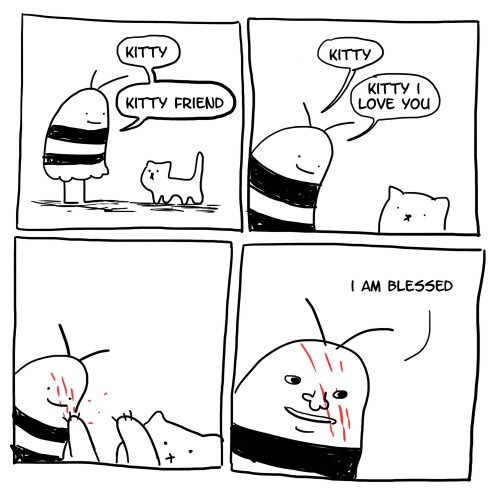






















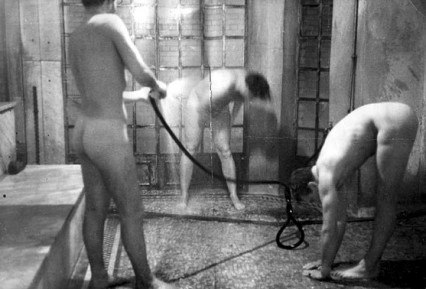





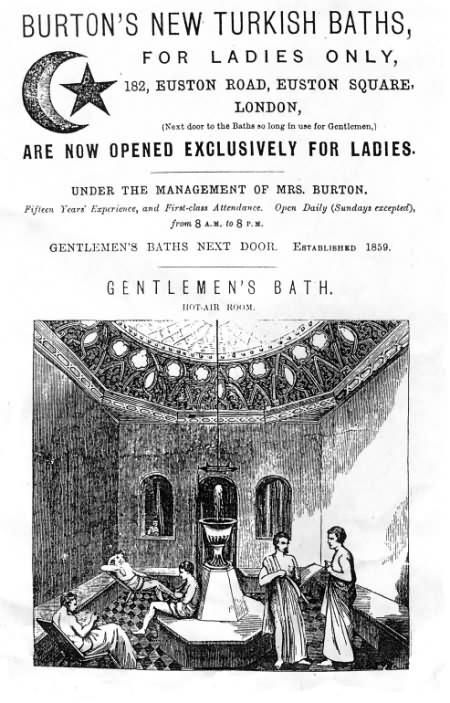

 What's better than a pixelated, top-down gorefest set to frenetic synth music? A pixelated, top-down gorefest set to frenetic synth music with a gravity gun. Half-Line Miami is an unapologetic mix of Half-Life 2, Valve's massively popular 2004 firs...
What's better than a pixelated, top-down gorefest set to frenetic synth music? A pixelated, top-down gorefest set to frenetic synth music with a gravity gun. Half-Line Miami is an unapologetic mix of Half-Life 2, Valve's massively popular 2004 firs...



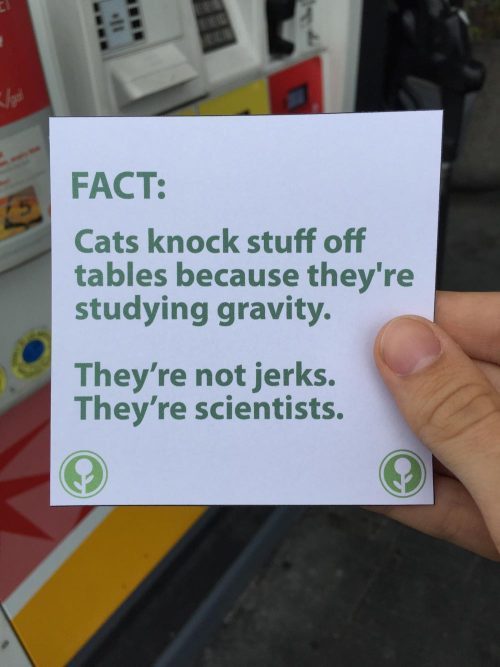
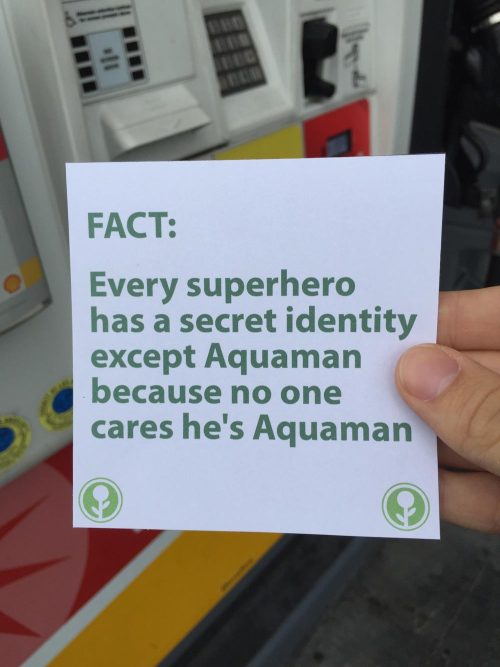
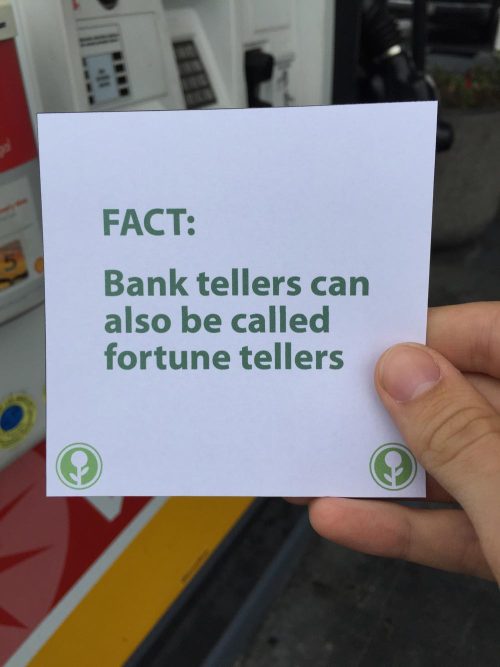




 Researchers at the Massachusetts Institute of Technology unveiled a new 3D printing method on Friday that employs transparent glass as precursor instead of plastic. The method, called 3DGP, works basically the same way that conventional 3D printing...
Researchers at the Massachusetts Institute of Technology unveiled a new 3D printing method on Friday that employs transparent glass as precursor instead of plastic. The method, called 3DGP, works basically the same way that conventional 3D printing...